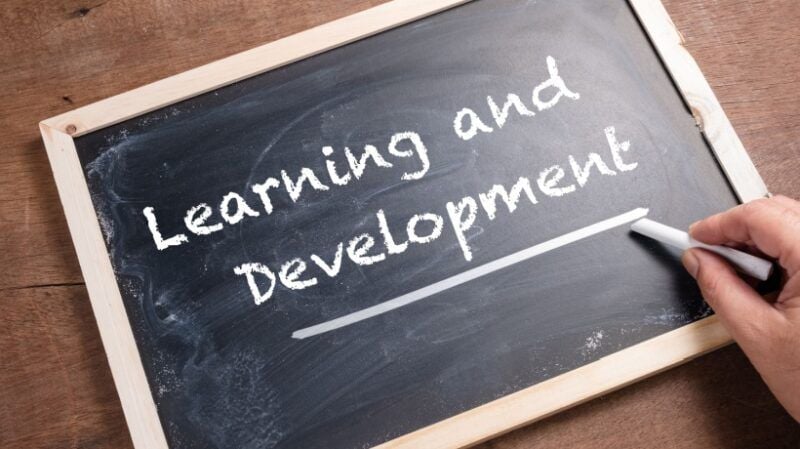
The New Era Of L&D: The Heart Hasn’t Altered
Let me share something I have actually been seeing up close: Understanding and Growth (L&D) isn’t just evolving, it’s transforming at a rate a lot of us haven’t experienced before. Think about it. 5 years back, we were speaking about on-line learning as a support group. Today, it’s the backbone of just how organizations reskill, keep, and empower their labor force. Functions are moving, abilities are constantly being redefined, and growth strategies look nothing like the ones we built a years earlier.
As an L&D specialist, I commonly listen to leaders ask: “What are the most sensible technologies I can pursue my workforce? Exactly how do I even recognize what abilities to prioritize?” If you have actually been duke it outing these concerns, you’re not alone. Allow’s unload what’s taking place and where you can concentrate your energy.
1 From Work Duty To Abilities: The Shift That Changes Everything
We utilized to make finding out around static job summaries. Today, work doesn’t fit nicely right into those boxes any longer. Organizations are relocating towards skills-first methods. Why? Due to the fact that skills are real money of development.
- Skill taxonomies and frameworks (like those constructed right into modern-day LMS platforms) are aiding companies determine what’s missing out on today and what will be critical tomorrow.
- Interior talent marketplaces are arising, where employees are matched to tasks based on skills rather than work titles.
- For you as a leader, this suggests reskilling isn’t a side job; it’s your best retention method.
2 AI Is Right here, But It Requirements Guardrails
AI is no longer advanced; it’s already inside your LMS and learning approach, nudging students with tailored recommendations. And when done right, it seems like magic.
- Customized paths
AI analyzes student habits and recommends training courses aligned with profession desires. - Time-saving automation
Admin jobs like registration, reporting, and comments loopholes are ending up being simpler. - Skill presence
AI-powered control panels give leaders clearness on labor force preparedness.
However right here’s my care: AI is only as solid as the information and administration behind it. Wonder, experiment, yet additionally ask suppliers difficult concerns regarding openness, bias, and information security.
3 Skills-Based Knowing Meets Human-Centered Design
While technology can scale, human-centered layout makes it stick. The advancements I’m most excited around are the ones that mix technology with empathy:
- Microlearning and nudges
Little, just-in-time bursts of knowledge that respect students’ busy schedules. - Knowing in the circulation of job
Combinations with MS Groups, Slack, or CRMs where employees already spend their time. - Career-linked discovering
Growth intends that directly attach skills discovered to promotions or new possibilities.
These aren’t just “nice-to-haves.” They’re coming to be expected.
4 Immersive Understanding Is No More An Experiment
Online Truth (VR) and Increased Reality (AR) were when buzzwords. Today, they’re useful devices, in addition to much-utilized simulations, scenario-based discovering, and gamification, particularly for remote and worldwide teams.
- Think of a frontline worker exercising safety and security protocols in VR, safe.
- Or a new supervisor entering a gamified simulation to exercise leadership conversations.
These immersive strategies boost retention and confidence, specifically in high-stakes functions. And the good news? Costs are reducing, making them a lot more achievable for a wider series of organizations.
5 Collaboration Is The New L&D Superpower
Here’s the truth: in the new age, L&D can’t succeed in a silo any longer. The most impactful programs I’ve seen were birthed from strong collaboration in between human resources, IT, and business leaders.
- HR supplies the lens of skill and society.
- IT makes sure systems integrate perfectly.
- Business leaders connect learning to method and development objectives.
When these voices integrated, learning comes to be a service motorist, not simply a HR feature.
If You’re Unclear About Skills Or Priorities, Begin Here
Several leaders inform me, “I’m not also clear concerning which abilities matter most.” That’s totally reasonable. The landscape in this new era of L&D is loud. Right here’s an easy approach I advise:
- Pay attention to your company approach
What’s changing in your market, product, or consumer assumptions? - Check out your workforce data :
Where are individuals leaving? Which groups are battling? - Begin small with pilots
Pick one location, like electronic fluency, management readiness, or customer experience, and run a concentrated program. Action, find out, scale.
Bear in mind: you don’t have to do everything simultaneously. Also small, deliberate relocations can develop big surges in culture and efficiency.
Last Thought: The Heart Of L&D Hasn’t Altered
Yes, the devices, functions, and methods are changing considerably. Yet at the heart of it, also the brand-new period of L&D is still concerning unlocking human possibility. As CLOs and L&D leaders, our work is to create settings where people feel qualified, supported, and influenced to expand. Whether via AI-driven customization, immersive simulations, or just far better discussions between supervisors and groups, the goal remains the very same: to help people thrive so that organizations can thrive.
If you’re curious regarding which advancements can function best for your workforce, start discovering. Try something little, measure the effect, and don’t hesitate to repeat. Since in 2025, one of the most successful L&D leaders will not be the ones who did everything, they’ll be the ones that relocated with purpose.